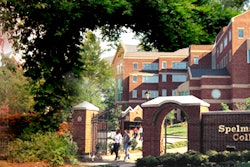Inclusivity has become an increasing focus on college campuses across the country, which has resulted in an emphasis on attracting more students of color. However, recent reports have highlighted the inability of many institutions to provide the supportive environments for students of color to be successful and persist.
Supportive environments are foundational at historically Black colleges and universities (HBCUs), which is a major reason students from these institutions achieve academic and professional success. Recent studies have pointed to the ability of HBCUs to develop Black students’ perceptions of feeling supported, and greater post-graduation success, than at predominantly White institutions (PWIs). However, while some top PWIs may struggle with providing the necessary support mechanisms for Black students’ success, access to quality resources continue to make these institutions appealing.
Collaborative efforts between PWIs and HBCUs that utilize the strengths of both institutions can provide quality educational experiences and support for Black students.
A recent report by The Education Trust concluded that PWIs varied in their ability to provide inclusive environments for students of color that promote institutional well-being. For example, observing institutions with similar Black student populations at Rutgers University and Purdue University, African-American students’ graduation rates improved by 12 percent at Rutgers and decreased by 5 percent at Purdue. Rutgers attributed some of its success to the Paul Robeson Cultural Center, which provides an environment similar to what is found at an HBCU by providing mentoring programs for Black students, cultural events and culturally relevant academic advising.
When institutions are intentional about ensuring that a supportive environment exists, Black students are more likely to thrive and experience positive outcomes. For example, Ohio State University has increased Black student graduation rates by 31 percent due to a focus on pre-collegiate initiatives for first-generation, low-income students and an early arrival program for Black students.
A recent Gallup-Purdue study found that students who attended HBCUs believed their institution better prepared them for life outside college, that they were thriving financially post-graduation and that their school was “the perfect school” for them, which was significantly higher than Black students at PWIs. Despite the successes of HBCUs in educating Black students, they continue to face an uphill battle stemming from unequal funding and massive budget cuts, declining enrollment and frequent changes in presidential leadership. These challenges have continued to bring into question the viability of HBCUs and have forced closures for some.
Solutions that seek to sustain the viability of HBCUs and enhance PWIs’ success at graduating Black students are needed. One potential solution lies in Section 324, paragraph C within the Higher Education Act of 1965 that allows for additional funding for HBCUs when students attend a graduate program in a discipline where they are underrepresented. The provision states: “The Secretary shall allot to each HBCU a sum which bears the same ratio to one-fourth of that amount as the percentage of graduates per institution, who are admitted to and in attendance at, within five years of graduation with a baccalaureate degree, a graduate or professional school in a degree program in disciplines in which Blacks are underrepresented, bears to the percentage of such graduates per institution for all HBCU institutions.”





















